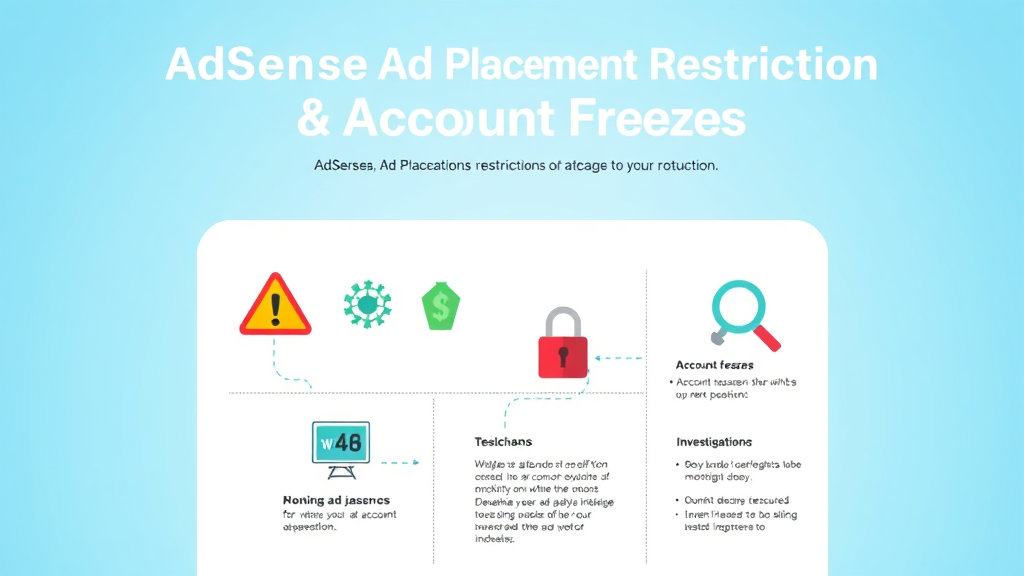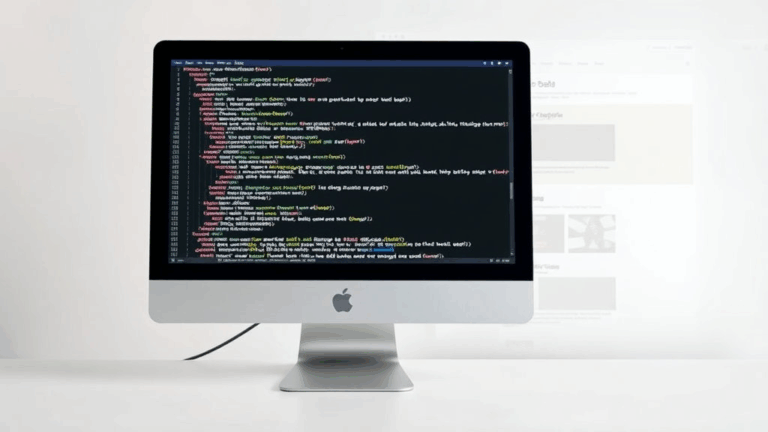Digging Through AdSense Serving Limits and Account Freezes
Why AdSense Accounts Get Restricted Without Explanation
There’s a specific flavor of despair that hits when your AdSense dashboard suddenly shows: “Ad serving has been limited.” No specific reason, no traffic spike, no obvious policy violation — just the hosting equivalent of a cold shoulder. In one case, this hit me a couple days after embedding a new niche subdomain on a headless WordPress install. No surge, no shady clicks. Just… bam.
Google doesn’t give you a lot to go on. If you’ve spent more than five minutes in the forums, you’ve probably seen the stock answer: “Your account is under review due to invalid traffic concerns.” That’s not super helpful when your traffic graph looks like a pancake and you’re running purely organic referrals from main site embeds.
The undocumented edge case here? Accounts with historically high CPC (e.g., finance blogs) seem to get flagged quicker even if CTR and traffic stay modest. It’s like Google thinks you must be gaming the system if you make over a certain RPM threshold without the volume to match.
One quote I keep coming back to — from a random GitHub issue, of all places — was: “Google doesn’t trust low traffic sites making too much money.”
The Confusing Behavior of Auto Ads During a Restriction
Here’s where things get buggy. If you’re running Auto Ads, they don’t shut off entirely when the ad limit hits. Some placeholders will render on-page, and sometimes you’ll even see live creatives load — but they won’t pay out.
I’ve dumped hours chasing this. When inspecting in DevTools, the adsbygoogle.js will still request the ad from one of the Google ad domains, and occasionally GPT (the slot loader) will render something that looks fully legit. But if you check the impressions/counts, nothing lands in the dashboard. No revenue. No metrics logged either.
“Ghost ads,” as I started calling them in a debug spreadsheet. They paint the canvas, but they don’t count.
This behavior isn’t documented on Google’s support site. The only hint is sometimes buried in forum replies from unpaid product experts who say “ad code will still appear on the page, but no monetized impressions will be logged.” It gives you a false sense that things are working again when they’re not.
Resubmitting Sites During a Serving Limit: Does It Help?
Short answer: it can actually make things worse. I tested it. Took a low-traffic leisure domain that got hit with a serving limit (probably because of questionable VPN bot traffic the week prior — bless Chrome’s unrestricted extensions) and tried removing then re-adding the property to AdSense. The limit timer reset. From scratch.
This isn’t well-known, but AdSense treats site resubmission as new inventory. It’ll trigger a fresh policy scan, restart the evaluation window, and if you’re unlucky, extend the limitation even if you were halfway through the original review cycle.
Also: If you were running only one approved domain and delete it, your entire account goes into a weird limbo state where no ads show on anything — not just the deleted domain. You can re-verify, but don’t expect a fast reapproval. The original cache is gone.
Legit User Activity Still Looks Suspicious: Proxy Chains and Captive Portals
This was one of those moments that makes you want to never look at traffic logs again. I had a clean school tech blog pulling maybe 500 uniques a day, mostly from emails sent out to a substack list. No ad clicking campaigns, nothing shady. Got hit with ad limiting after three days.
Started digging. Turns out several visits were coming in from captive portals — dorm WiFi, campus hotspots — using bulk NATs that routed multiple sessions through 1-2 public IPs. This made it look like 43 users clicked the same ad from “the same place.”
AdSense doesn’t like that. It can’t distinguish between a kid checking your Raspberry Pi build guide on dorm WiFi and a click farm in Dhaka using proxy chains. Same headers, same IP block, same time window? Suspicious.
Check your logs for dead giveaways:
via=1.1 ID-POSTPROXYor similar tags in request headers- Overlapping
user-agentand identical behavior over a narrow window - Redirect patterns from captive login URLs (e.g.,
router.login,connectme.local) - Repeated failures in client-side JS — often causes placeholders to retry multiple times
It’s the kind of thing machine detection flags but no human would guess matters.
Appealing or Contacting Support: The Weeds You Walk Into
Don’t expect a functional appeal process. You’ll fill out their invalid traffic feedback form and get a form email back. That’s operating as intended. There’s no human triage until your account gets completely banned — that’s when they’ll actually review something. Irony… not funny.
I once got a vague copy-paste response that included a paragraph about mobile redirect malware. This was for a static Docusaurus site with zero JS libraries installed aside from Prism for syntax highlighting.
“Your traffic contains redirection behavior inconsistent with AdSense policies.”
I ran every security tool under the sun, scanned the headers, crawled every anchor — nothing redirected. Never figured out what the bot saw. Eventually, the message cleared after four weeks. Probably a false positive, but I’ll never be sure.
What Actually Triggers the Cooldown to End?
This one’s murky. Based on multiple sites I’ve had hit by ad serving limits (13 so far, if I’m counting correctly), there are a few things that might help — or at least seem correlated:
- Traffic staying steady but not rising — spikes seem to reset the timer
- Installed reCAPTCHA v3 on forms — reduced bots and probably reduced invalid detection
- Disabling Auto Ads and using manual placements instead — behavior became easier to predict
- Removing embedded third-party widgets (social feeds, lead-gen popups)
- Switching DNS to Cloudflare and enabling bot fight mode — a little overkill, but trimmed bad hits
One thing I noticed: if I left the ad code on the page but stopped generating ad traffic (like redirecting all monetized pages to a non-display template), the cooldown didn’t resolve any faster. Google says they want “valid traffic,” not “no traffic.” Important nuance.
The Sneaky Way Some People Are Circumventing the Limit
Not saying you should do this — I’m saying it exists. Some publishers have partially worked around the serving restriction by changing their domain but keeping the same content. Since the AdSense site approval process is per-domain, the theory goes: new domain = new slate = fresh ad inventory reviews.
It doesn’t reset your account health history, but if your root domain is flagged too heavily, moving to a subdomain with a different DNS and content structure has actually worked in some cases. Needs at least 10–14 days between submission and Auto Ads deployment, and even then — no guarantees.
Did it once with a travel blog that got hit for invalid traffic (probably tourists Google-mapping too many times). Moved to a hyphenated domain, made a few content tweaks, got reapproved in three weeks. Same AdSense account, same ads.txt fingerprint. Not collapsible, but it dodged the throttle.
Inactive Accounts Can Still Get Flagged
Here’s a head-scratcher. I had an old affiliate comparison site on a dead PHP stack — hadn’t touched it in months. It was pulling maybe ten visits a day, all legacy backlinks. Still had the AdSense code embedded (because, who cleans up old projects).
One day, I log into AdSense to check another project and boom: a notification that ad serving had been limited for that domain. Checked the logs: some scraper bot had been hammering the outdated RSS page — hundreds of user agents spoofing Reddit bots, oddly enough.
Even stale, forgotten sites can trigger this stuff. The presence of ads is enough. That’s what makes this tricky — AdSense applies restriction at the account level, so one misbehaving site tanks it all.
If your sideloaded testing sandbox has ad code you forgot to comment out and it gets crawled or embedded, it can tank your RPM on unrelated domains.














